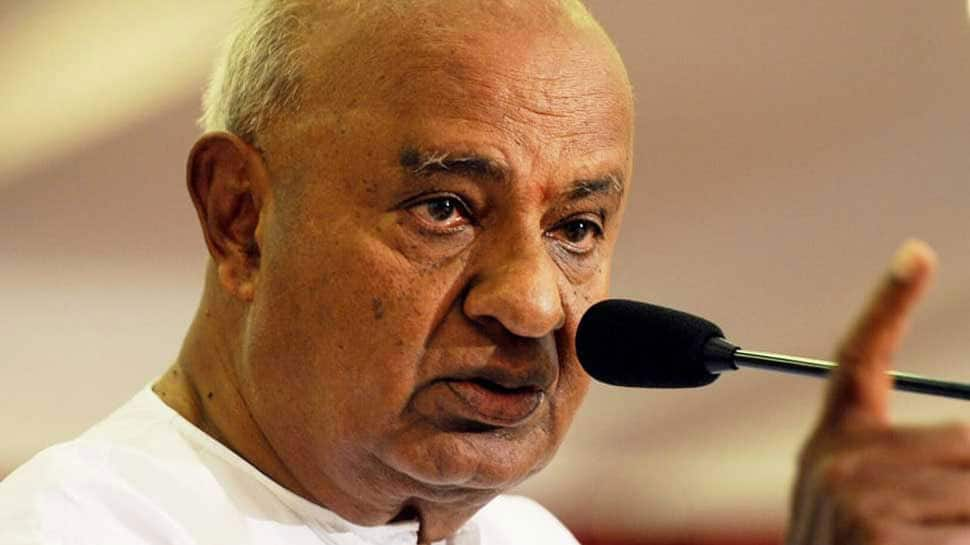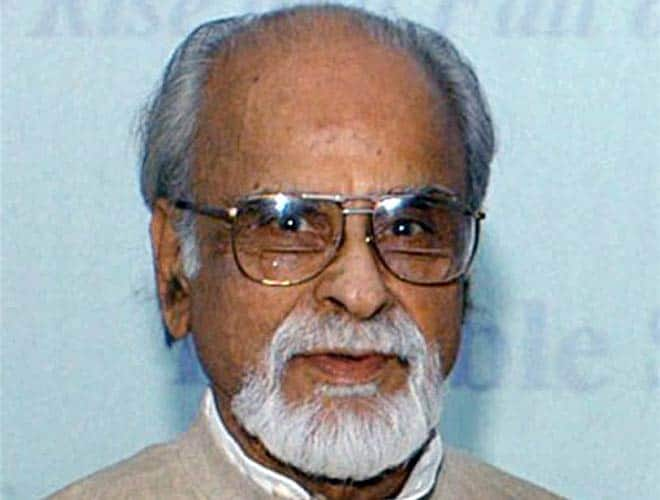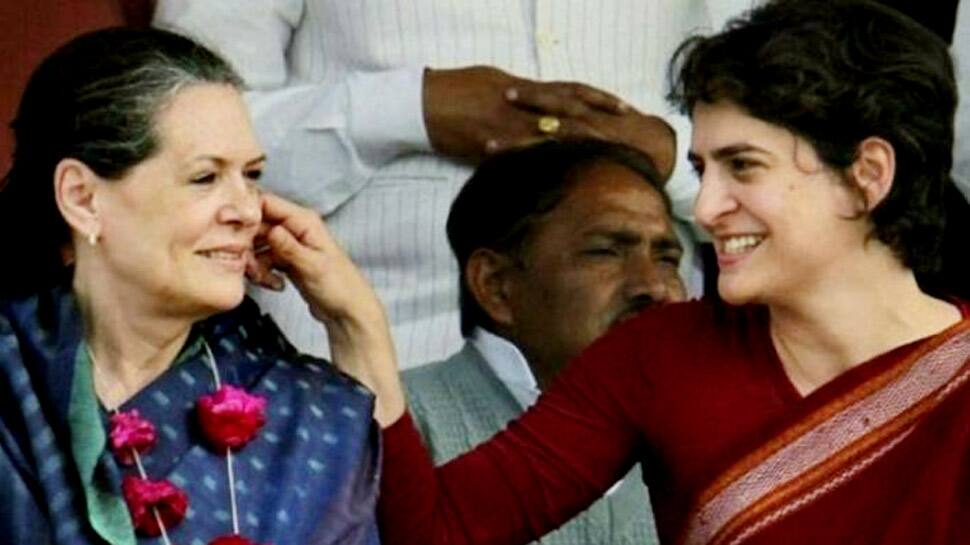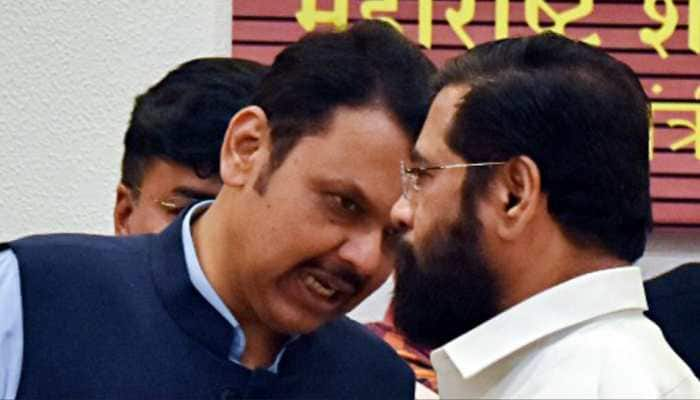INKredible India: The story of 1998 Lok Sabha election - All you need to know
HD Deve Gowda and then IK Gujral are largely known as PMs who were unable to tame the ruckus of coalition politics between the years of 1996 and 1998. It eventually resulted in snap election in which most contesting parties fancied themselves as winners.
Trending Photos
) File photo
File photo Coalition and instability were the two prominent words which defined India’s political climate between the Lok Sabha elections of 1996 and 1998. These years saw a number of developments in the Indian Parliament which was essentially highlighted by two factors – the Bharatiya Janata Party emerging as a national force capable of challenging Indian National Congress’ past hegemony, and regional parties turning into entities that needed to be wooed into alliances.
The Lok Sabha election of 1996 had already shown that both BJP and the Congress felt an urgent need to align with regional parties in their respective bids to make it to the majority mark in the Parliament. Gone were the days when national parties or confluences of smaller parties with a national outlook could aspire to make it on their own. For all practical purposes, the mid-1990s in India saw a bi-polar political scenario where each side was ought to woo smaller, regional parties for their support, often as much as trying to impress voters themselves.
What also unfolded after the 1996 election was political manoeuvrings hitherto unseen. The BJP had emerged as the single-largest party for the first time but the Atal Bihari Vajpayee government could not muster up the numbers and collapsed in just 13 days. The United Front was not as united as its names suggested and HD Deve Gowda and IK Gujaral each had one shot at trying to govern the country as Prime Ministers. Dictating the terms from the shadows was Congress, a party that chose to provide support rather than attempt to muster up the numbers for itself. Being number 2 to BJP in 1996 may have had something to do with this.
Deve Gowda as PM

The BJP had been invited to form the government after the 1996 election and told to prove majority in two weeks by President of the time Shankar Dayal Sharma. The numbers, however, were not coming, forcing Vajpayee to resign after just 13 days.
In walked Janata Dal’s Deve Gowda who was part of the United Front and, with the support of Congress, took command on June 1 of 1996. His government of just over 10 months was more about walking the tightrope of coalition politics than taking giant nation-building steps. Deve Gowda’s cabinet had ministers from his own Janata Dal, TMV, CPI, SP and DMK, and with Congress keeping a close watch from close quarters. Critics maintain till date that it was a patchwork that meant to satiate the political ambitions of leaders from these parties than a union formed for the progress of the country and welfare of its people.
The tug of war between the ministers with hugely differing ideologies eventually threatened the government at the time coming apart at the seams. Tensions were high and it was eventually decided that Congress would support a fresh face from the United Front.
What had Congress to gain?
The condition that Congress would be consulted before any significant decision by the government remained intact. Also, the party succeeded in keeping a resurgent BJP at bay, at least for the time being.
IK Gujral as PM

There was a tussle within the United Front regarding who would replace Deve Gowda and sit in the PM’s chair. Political ambitions, as mentioned before, were astronomically high at this point. It was eventually decided that Inder Kumar Gujral – a non-controversial leader who had thus far served as the foreign minister under Deve Gowda – would take over.
Gujral’s name was given the stamp of approval largely because he was the consensus candidate and not primarily because he was the most capable of the available options. As such, many see his major achievement during a short stint as PM as being able to remain PM for as long as he had.
Troika of Threats
Much like when Deve Gowda was the PM, Gujral too had to spend a lot of his energies in ensuring that the delicate balance in his government, and the uneasy support of Congress remained.
Despite all his efforts, however, three controversies posed massive challenges for the Gujral government and eventually led to its demise.
First among these was when the Central Bureau of Investigation (CBI) attempted to take action against Lalu Prasad Yadav in connection with the Fodder Scam. There was a revolt within the Janata Dal of which the PM himself was a part. Several members of the United Front began calling for Lalu’s resignation who was the Bihar CM at the time. The Congress reportedly made only muted calls echoing the demands for resignation. As such, Gujral faced the problem by remaining mute and, eventually, by transferring the then CBI Director – Joginder Singh. This failed to help Lalu’s cause as Janata Dal leader would go on to expel Lalu and the Bihar leader would resort to establishing the Rashtriya Janata Dal (RJD).
The entire episode hardly helped Gujral as he was accused of being a non-effective authority and one who tried to create roadblocks in the due process of justice and investigation.
Gujral would once again come under immense political fire when his government recommended President’s Rule be imposed in Uttar Pradesh following violence during a trust vote in the state assembly. The BJP state government under Kalyan Singh saw it as a move to snatch power even as President KR Narayan refused to give his assent to the Centre’s recommendation. Subsequently, the Allahabad High Court too ruled against President’s Rule in the state, leaving the Gujral government rather red-faced.
The flash point came about on November 18 of 1997 when the Jain Commission report was leaked. Established to investigate possible conspiracies that may have been at play behind the assassination of former PM Rajiv Gandhi, the commission is believed to have found that the Dravida Munnetra Kazhagam (DMK) may have been ‘sympathetic’ towards LTTE terrorists accused of the assassination. Almost immediately after, calls for DMK’s ouster from the ruling coalition began gaining decibel levels.
Congress wanted the report to be presented in Parliament to which Gujral refused as he may have not wanted to antagonise DMK at the time. He later established a Joint Parliamentary Committee to which Congress agreed. Amid calls that anybody from DMK named in the report ought to resign, the report was presented in Parliament and Congress once again demanded the exit of DMK from the ruling coalition. The uneasy truce had been shattered with Gujral resigning but not calling for the Parliament’s dissolution.
At this stage, no possible hand holding appeared workable and the stage was set for yet another round of Lok Sabha election.
Election 1998 – Status of States:
The Lok Sabha election 1998 was conducted across 32 states and union territories in India. These were:
Andhra Pradesh
Assam
Arunachal Pradesh
Bihar
Goa
Gujarat
Haryana
Himachal Pradesh
Jammu and Kashmir
Karnataka
Kerala
Madhya Pradesh
Maharashtra
Manipur
Meghalaya
Nagaland
Orissa
Punjab
Rajasthan
Sikkim
Tamil Nadu
Tripura
Uttar Pradesh
West Bengal
Andaman and Nicobar Islands
Chandigarh
Dadra and Nagar Haveli
Daman and Diu
National Capital Territory of Delhi
Lakshadweep
Pondicherry
Political parties in the fray:
There were seven national parties and another 30 state parties which contested the Lok Sabha 1996 election, apart from many other registered (unrecognised) parties. These were:
National Parties:
Bharatiya Janata Party
Bahujan Samaj Party
Communist Party of India
Communist Party of India (Marxist)
Indian National Congress
Janata Dal
Samata Party
State Parties:
Arunachal Congress
All India Anna Dravida Munnetra Kazhagam
Asom Gana Parishad
All India Indira Congress (Secular)
Autonomous State Demand Committee
Dravida Munnetra Kazhagam
All India Forward Bloc
Hill State People’s Democratic Party
Haryana Vikas Party
Jammu and Kashmir National Conference
Jharkhand Mukti Morcha
Janata Party
Kerala Congress
Kerala Congress (M)
Maharashtrawadi Gomantak
Mizo National Front
Manipur People’s Party
Muslim League Kerala State Committee
NTR Telegu Desam Party (Lakshmi Parvathi)
Pattali Makkal Katchi
Republican Party of India
Revolutionary Socialist Party
Shiromani Akali Dal
Sikkim Democratic Front
Shiv Sena
Samajwadi Party
Telegu Desam Party
Tamil Maanila Congress (Moopanar)
United Democratic Party
United Goans Democratic Party
Election 1998
Congress is often blamed for engineering a situation which made snap election inevitable in 1998. This was to be the second election in as many years which prompted doubts on how effective coalition politics is. The past two years had been strenuous in terms of nation-building with most of the attention being put on keeping alliance members together.
It would come undone.
The election bugle was sounded and India got ready to once again choose a government.
The Lok Sabha election of 1998 was conducted across 7.73 lakh polling stations in 545 parliamentary seats. After a record 13,952 candidates in the previous edition, Lok Sabha election of 1998 saw just 4,750 candidates enter the battle, thanks to Election Commission of India hiking the deposit amount from Rs 500 to Rs 10,000. The number of candidates contesting was, in fact, the lowest since 1984-85. The average number of candidates per constituency fell from 25.7 in 1996 to 8.7 in 1998.
But while the number of candidates contesting may have fallen, there was no shortage in the zeal of political parties to reach out to voters with their tall promises.
The BJP was determined to seize the opportunity at hand and ensure that it not only comes to power but that it remains in power. Once again, the party underlined its commitment to core Hindutva values, support for the cause of building Ram Temple in Ayodhya and formulation of a Uniform Civil Code. The party’s manifesto also stressed on abrogation of Article 370 of the Constitution, of maintaining India’s security and of removing poverty and providing jobs. It also attacked Congress for engineering political instability and charged it, once again, for being a largely corrupt party.
The Congress hit back through its manifesto and assured voters of a responsive administration. The party also stressed on the need for a stable government and for inclusive economic development. By this time, Sonia Gandhi had taken the political plunge as well and she was put out as the face of a resurgent Congress.

The other parties – regional and national – also mostly promised more of what they had already been swearing by.
Pre-poll alliances too were being constructed aplenty with BJP, especially, reaching out to smaller parties to ensure they can agree on a working arrangement.
Promises and alliances would eventually help BJP deal a solid punch to Congress in the Lok Sabha election of 1998 which had a voter turnout of 61.97 per cent. The party won 182 seats on its own merit and while this may have been short of the majority mark, it was a massive statement of intent. Through alliances, BJP managed to go where not many would have thought possible. Indeed, the party managed to get 31 per cent of the votes all along the eastern coastline of the country where it had secured only nine per cent of the votes only two years back. The voter swing in this region was an impressive 22 per cent.
At the other end of the electoral spectrum was Congress.
The Congress only bettered its 1996 showing by one seat, winning 141. The grey area of concern for the party, however, was that there was a 2.66% downward fall in voter swing. In fact, in the politically charged state of Uttar Pradesh, Congress was smashed to smithereens and was unable to hold on to even Amethi – the bastion of the Gandhi family.
Several regional parties once again performed well and were instrumental in shaping how things would work in New Delhi eventually. The National Democratic Alliance together would account for 254 seats, 110 seats more than Congress and its allies together. The United Front was relegated to a distant third with wins in just 64 seats.
The result showcased that while the BJP did maintain a firm foothold in the Hindi-belt, it could partner the right partners in the south and towards the east to make a solid mark in Lok Sabha elections.
Vajpayee was back in the PM’s chair and he attempted to lead the country into a new era of peace and security while trying to project India as a power player at the world stage. What followed was the nuclear test in Pokhran and the Kargil War – and both showcased India as a power that ought not to be underestimated.
Within the country though, politically speaking, the constraints of coalition politics would remain as vicious as ever, eventually resulting in yet another Lok Sabha election in the country.
Stay informed on all the latest news, real-time breaking news updates, and follow all the important headlines in india news and world News on Zee News.
Live Tv







)
)
)
)
)
)
)
)
)
)
